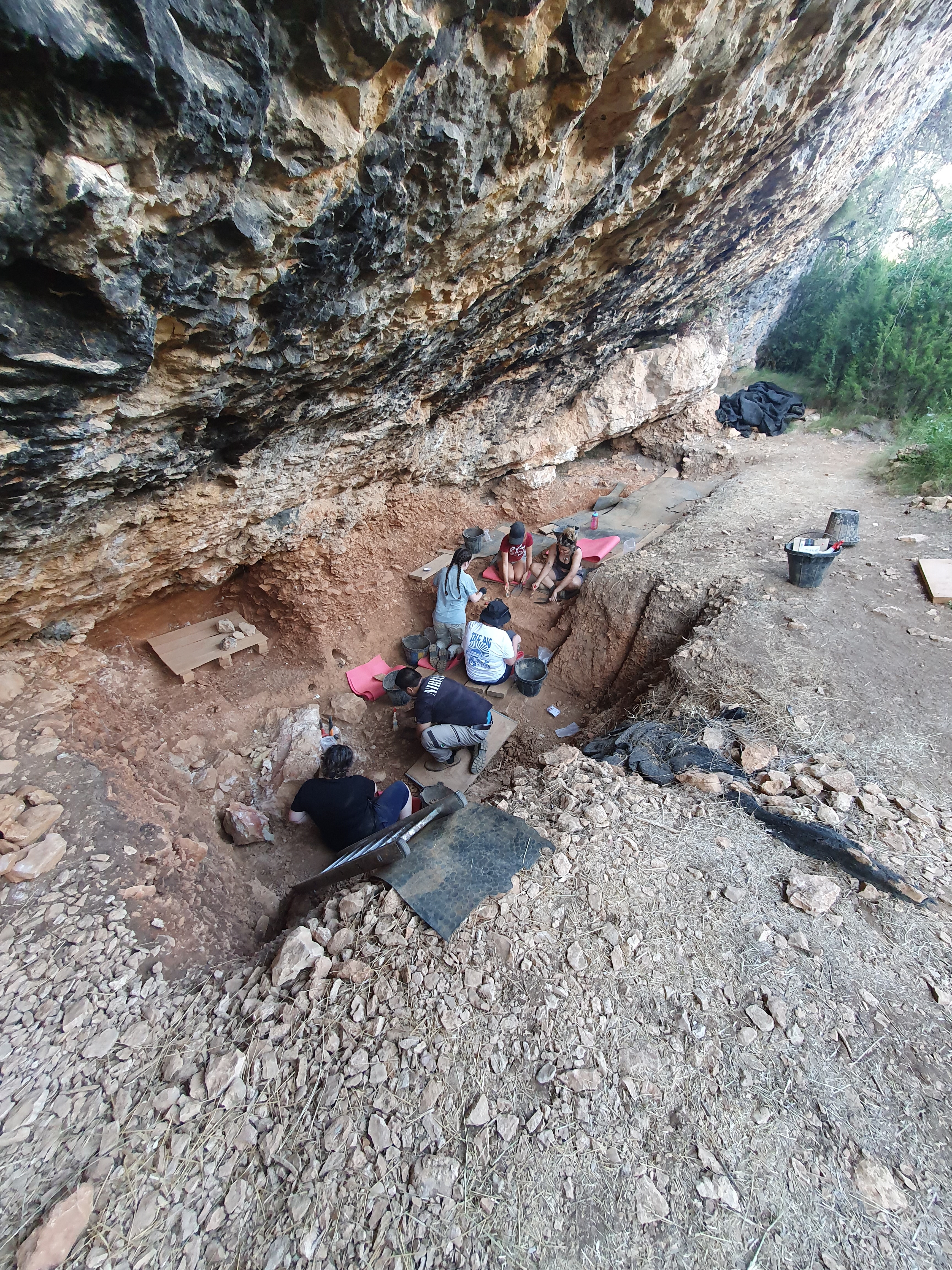The discovery of a rare Neanderthal rock shelter from the period before Homo sapiens arrived in Western Europe has provided some surprising new insights into how these extinct humans lived when they were the only hominids in town. Located in the Spanish Pyrenees, the site contains a wealth of animal bones and stone tools, revealing an extraordinary level of flexibility and adaptability for a species once considered dull and uninspired.
Known as Abric Pizarro, the camp is one of the very few Neanderthal spots dated to the marine isotope stage 4 (MIS 4) period, which lasted from around 100,000 to 65,000 years ago. Our own species didn’t make it to the Iberian peninsula until MIS 3, with Neanderthals becoming extinct within a very short time of our arrival.
“This is one of the most interesting things about this site, to have this unique information about when Neanderthals were alone and living in harsh conditions and how they thrived before modern humans appeared,” explained study author Dr Sofia Samper Carro in a statement.
A typical excavation day at Abric Pizarro.
Image credit: Sofia Samper Carro
According to the researchers, the Pyrenees region had previously been “considered unsuitable for stable and continuous Neanderthal presence during MIS 4 due to millennial-scale climatic shifts, which would have translated into extreme arid conditions with sharp temperature falls.” However, the discoveries at Abric Pizarro paint a very different picture, indicating that the Neanderthals’ ingenuity enabled them to blossom before modern humans came along.
For instance, because most MIS 3 Neanderthal sites predominantly contain the bones of larger carnivores like horses and rhinoceros, it had been assumed that the species lacked the ability to hunt smaller creatures. However, much of the faunal assemblage found at Abric Pizarro belongs to small mammals, suggesting that they were capable of adapting their hunting strategies according to the types of prey available in the region at the time.
“Our surprising findings at Abric Pizarro show how adaptable Neanderthals were,” said Samper Carro. “The animal bones we have recovered indicate that they were successfully exploiting the surrounding fauna, hunting red deer, horses and bison, but also eating freshwater turtles and rabbits, which imply a degree of planning rarely considered for Neanderthals.”
Based on the varied remains found at the site, the authors conclude that the local “Neanderthal groups were adept hunters, with a broad knowledge of the surrounding landscape, which they exploited efficiently.” At the same time, the stone tools recovered from Abric Pizarro display a variety of different knapping techniques, providing yet more evidence for the hominids’ expert ability to utilize the resources in their environment.
“They clearly knew what they were doing,” says Samper Carro. “They knew the area and how to survive for a long time.”
And while these findings don’t tell us how or why Neanderthals bit the dust so soon after modern humans made their debut, they do at least fill in some of the gaps in the narrative by revealing the health of Neanderthal communities in the period before they encountered us.
“Neanderthals disappeared around 40,000 years ago,” says Samper Carro. “Suddenly, we modern humans appear in this region of the Pyrenees, and the Neanderthals disappear. But before that, Neanderthals had been living in Europe for almost 300,000 years.”
The study is published in the Journal of Archaeological Science.
Source Link: Unique Neanderthal Lair Reveals How They Lived Before Modern Humans Appeared
